- Home
- Jeffery Deaver
The Vanished Man Page 5
The Vanished Man Read online
Page 5
And wires.
Wires and cables everywhere, covering much of the limited square footage of the room, some tidily coiled and connecting adjacent pieces of machinery, some disappearing through ragged holes shamefully cut into the hard-earned smoothness of century-old plaster-and-lath walls.
Lincoln Rhyme himself was largely wireless now. Advances in infrared and radio technology had linked a microphone on his wheelchair--and on his bed upstairs--to environmental control units and computers. He drove his Storm Arrow with his left ring finger on an MKIV touchpad but all the other commands, from phone calls to email to slapping the image from his compound microscope onto computer monitors, could be accomplished by using his voice.
It could also control his new Harman Kardon 8000 receiver, which was currently piping a pleasant jazz solo through the lab.
"Control, stereo off," Rhyme reluctantly ordered, hearing the front door slam.
The music went silent, replaced by the erratic beat of footsteps in the front hall and the parlor. One of the visitors was Amelia Sachs, he knew; for a tall woman she had a decidedly light footfall. Then he heard the distinctive clump of Lon Sellitto's big, perpetually outturned feet.
"Sachs," he muttered as she entered the room, "was it a big scene? Was it huge?"
"Not so big." She frowned at the question. "Why?"
His eyes were on the gray milk crates containing evidence she and several other officers carried. "I was just wondering because it seemed to take a long time to search the scene and get back here. It is okay for you to use that flashing light on your car. That's why they make them, you know. Sirens are allowed too." When Rhyme was bored he grew testy. Boredom was the biggest evil in his life.
Sachs, however, was impervious to his sourness--she seemed in a particularly good mood--and said merely, "We've got ourselves some mysteries here, Rhyme."
He recalled that Sellitto had used the word "bizarre" about the killing.
"Give me the scenario. What happened?"
Sachs offered a likely account of the events, culminating in the perp's escape from the recital hall.
"The respondings heard a shot inside the hall then they did a kick-in. Timed it together, went in through the only two doors in the room. He was gone."
Sellitto consulted his notes. "The patrol officers put him in his fifties, medium height, medium build, no distinguishings other than a beard, brown hair. There was a janitor who says he didn't see anybody go in or out of the room. But maybe he got witnessitis, you know. The school's gonna call with his name and number. I'll see if I can refresh his memory."
"What about the vic? What was the motive?"
Sachs said, "No sexual assault, no robbery."
Sellitto added, "Just talked to the Twins. She hasn't got any present or recent boyfriends. Nobody in the past that'd be a problem."
"She was a full-time student?" Rhyme asked. "Or did she work?"
"Full-time student, yeah. But apparently she did some performing on the side. They're finding out where."
Rhyme recruited his aide, Thom, to act as a scribe, as he often did, jotting down the evidence in his elegant handwriting on one of the large whiteboards in the lab. The aide took the marker and began to write.
There was a knock on the door and Thom disappeared momentarily from the lab.
"Incoming visitor!" he called from the hallway.
"Visitor?" Rhyme asked, hardly in the mood for company. The aide, though, was being playful. Into the room walked Mel Cooper, the slim, balding lab technician whom Rhyme, then head of NYPD forensics, had met some years ago on a joint burglary/kidnapping case with an upstate New York police department. Cooper had disputed Rhyme's analysis of a particular type of soil and had been right, it turned out. Impressed, Rhyme had dug into the tech's credentials and found that, like Rhyme, he was an active and highly respected member of the International Association for Identification--experts at identifying individuals from friction ridges, DNA, forensic reconstruction and dental remains. With degrees in math, physics and organic chemistry, Cooper was also top-notch at physical evidence analysis.
Rhyme mounted a campaign to get the man to return to the city where he'd been born and he finally agreed. The soft-spoken forensic tech/champion ballroom dancer was based in the NYPD crime lab in Queens but he often worked with Rhyme when the criminalist was consulting on an active case.
Greetings all around and then Cooper shoved his thick, Harry Potter style glasses high on his nose and squinted a critical eye at the crates of evidence like a chess player sizing up his opponent. "What do we have here?"
" 'Mysteries,' " Rhyme said. "To use our Sachs's assessment. Mysteries."
"Well, let's see if we can't make them a little less mysterious."
Sellitto ran through the scenario of the killing for Cooper as he donned latex gloves and began looking over the bags and jars. Rhyme wheeled up close to him. "There." He nodded. "What's that?" He was gazing at the green circuit board with a speaker attached.
"The board I found in the recital hall," Sachs said. "No idea what it is. Only that the unsub put it there--I could tell by his footprints."
It looked like it'd come from a computer, which didn't surprise Rhyme; criminals have always been in the forefront of technological development. Bank robbers armed themselves with the famous 1911 Colt .45 semiautomatic pistols within days of their release even though it was illegal for anyone but the military to possess one. Radios, scrambled phones, machine guns, laser sights, GPS, cellular technology, surveillance equipment and computer encryption ended up in the arsenal of criminals often before they were added to law enforcers'.
Rhyme was the first to admit that some subjects were beyond his realm of expertise. Clues like computers, cell phones and this curious device--all of which he called "NASDAQ evidence"--he farmed out to the experts.
"Get it downtown. To Tobe Geller," he instructed.
The FBI had a talented young man in its New York computer crimes office. Geller had helped them in the past and Rhyme knew that if anyone could tell them what the device was and where it might've come from Geller could do it.
Sachs handed off the bag to Sellitto, who in turn gave it to a uniformed policeman for transport downtown. But aspiring sergeant Amelia Sachs stopped him. She made sure he filled out a chain-of-custody card, which documents everyone who's handled each piece of evidence from crime scene to trial. She checked the card carefully and sent him on his way.
"And how was the assessment exercise, Sachs?" Rhyme asked.
"Well," she said. A hesitation. "I think I nailed it."
Rhyme was surprised at this response. Amelia Sachs often had a difficult time accepting praise from others and hardly ever bestowed it on herself.
"I didn't doubt you would," he said.
"Sergeant Sachs," Lon Sellitto pondered. "Gotta good ring to it."
They turned next to the pyrotechnic items found at the music school: the fuses and the firecracker.
Sachs had figured out one mystery, at least. The killer, she explained, had leaned chairs backward on two legs, balancing them in that position with thin pieces of cotton string. He'd tied fuses to the middle of the strings and lit them. After a minute or so the flame in the fuses hit the strings and burned through them. The chairs tumbled to the floor, making it sound like the killer was still inside. He'd also lit a fuse that ultimately set off the squib they mistook for a gunshot.
"Can you source any of it?" Sellitto asked.
"Generic fuse--untraceable--and the squib's destroyed. No manufacturer, nothing." Cooper shook his head. All that was left, Rhyme could see, were tiny shreds of paper with a burned metal core of fuse attached. The strings turned out to be narrow-gauge 100 percent cotton, generic and thus also impossible to source.
"There was that flash too," Sachs said, looking over her notes. "When the officers saw him with the victim he held up his hand and there was a brilliant light. Like a flare. It blinded both of them."
"Any trace?"
"None that I could find. They said it just dissolved in the air."
Okay, Lon, you said it: bizarre.
"Let's move on. Footprints?"
Cooper pulled up the NYPD database on shoe-tread prints, a digitized version of the hard-copy file Rhyme had compiled when he'd been head of NYPD forensics. After a few minutes of perusal he said, "Shoes are slip-on black Ecco brand. Appear to be a size ten."
"Trace evidence?" Rhyme asked.
Sachs picked several plastic bags out of a milk crate. Inside were strips of adhesive tape, torn off the trace pick-up roller. "These're from where he walked and next to the body."
Cooper took the plastic bags and extracted the adhesive tape rectangles, one by one, over separate examining trays, to avoid cross-contamination. Most of the trace adhering to the squares was dust that matched Sachs's control samples, meaning that its source was neither the perp nor the victim but was found naturally at the crime scene. But on several of the pieces of tape were some fibers that Sachs had found only in places where the perp had walked or on objects that he'd touched.
"Scope 'em."
The tech lifted them off with a pair of tweezers and mounted them on slides. He put them under the stereo binocular microscope--the preferred instrument for analyzing fibers--and then hit a button. The image he was looking at through the eyepiece popped onto the large flat-screen computer monitor for everyone to see.
The fibers appeared as thick strands, grayish in color.
Fibers are important forensic clues because they're common, they virtually leap from one source to another and they can be easily classified. They fall into two categories: natural and man-made. Rhyme noted immediately that these weren't viscous rayon or polymer based and therefore had to be natural.
"But what kind specifically?" Mel Cooper wondered aloud.
"Look at the cell structure. I'm betting it's excremental."
"Whatsat?" Sellitto asked. "Excrement? Like shit?"
"Excrement, like silk. It comes from the digestive tract of worms. Dyed gray. Processed to a matte finish. What's on the other slides, Mel?"
He ran these through the scope too and found they were identical fibers.
"Was the perp wearing gray?"
"No," Sellitto reported.
"The vic wasn't either," Sachs said.
More mysteries.
"Ah," Cooper said, peering into the eyepiece, "might have a hair here."
On the screen a long strand of brown hair came into focus.
"Human hair," Rhyme called out, noting hundreds of scales. An animal hair would have at most dozens. "But it's fake."
"Fake?" Sellitto asked.
"Well," he said impatiently, "it's real hair but it's from a wig. Obviously. Look--at the end. That's not a bulb. It's glue. Might not be his, of course, but it's worth putting on the chart."
"That he's not brown-haired?" Thom asked.
"The facts," Rhyme said tersely, "are all we care about. Write that the unsub is possibly wearing a brown wig."
"Okay, bwana."
Cooper continued his examination and found that two of the adhesive squares revealed a minuscule bit of dirt and some plant material.
"Scope the plant first, Mel."
In analyzing crime scenes in New York, Lincoln Rhyme had always placed great importance on geologic, plant and animal evidence because only one-eighth of the city is actually on the North American mainland; the rest is situated on islands. This means that minerals, flora and fauna tend to be more or less common to particular boroughs and even neighborhoods within them, making it easier to trace substances to specific locations.
A moment later a rather artistic image of a reddish twig and a bit of leaf appeared on the screen.
"Good," Rhyme announced.
"What's good about it?" Thom asked.
"It's good because it's rare. It's a red pignut hickory. You hardly ever find them in the city. The only place I know of are Central and Riverside Parks. And . . . oh, look at that. That little blue-green mass?"
"Where?" Sachs asked.
"Can't you see it? It's right there!" Feeling painfully frustrated that he couldn't leap from his chair and tap the screen. "Lower right-hand corner. If the twig's Italy then the mass is Sicily."
"Got it."
"What do you think, Mel? Lichen, right? And I'd vote for Parmelia conspersa."
"Could be," the tech said cautiously. "But there're a lot of lichens."
"But there aren't a lot of blue-green and gray lichens," Rhyme replied dryly. "In fact, hardly any. And this one is most abundant in Central Park. . . . We've got two links to the park. Good. Now let's look at the dirt."
Cooper mounted another slide. The image in the microscope--grains of dirt like asteroids--wasn't forensically revealing and Rhyme said, "Run a sample through the GC/MS."
The gas chromatograph/mass spectrometer is a marriage of two chemical analysis instruments, the first of which breaks down an unknown substance into its component parts with the second determining what each of those parts is. White powder that appears uniform, for instance, might be a dozen different chemicals: baking soda, arsenic, baby powder, phenol and cocaine. The chromatograph has been compared to a horse race: the substances start out moving through the instrument together but they progress at different rates, becoming separated. At the "finish line" the mass spectrometer compares each one with a huge database of known substances to identify it.
The results of Cooper's analysis showed that the dirt Sachs had recovered was impregnated with an oil. The database, though, reported only that it was mineral based--not plant or animal--and couldn't identify it specifically.
Rhyme commanded, "Send it to the FBI. See if their lab people've run across it." Then he squinted into a plastic bag. "That's the black cloth you found?"
Might be a clue, might be nothing . . .
She nodded. "It was in the corner of the lobby where the victim was strangled."
"Was it hers?" Cooper wondered.
"Maybe," Rhyme said, "but for the time being let's go on the assumption it's the killer's."
Cooper carefully lifted out the material. He examined it. "Silk. Hemmed by hand."
Rhyme observed that even though it could be folded into a tiny wad it opened up to be quite large, about six by four feet.
"We know from the timing he was waiting for her in the lobby," Rhyme said. "I'll bet that's how he did it: hid in the corner with that cloth draped over him. He'd be invisible. He probably would've taken it with him except the officers showed up and he had to get away."
What the poor girl must've felt when the killer materialized as if by magic, cuffed her and strung the rope around her neck.
Cooper found several flecks adhering to the black cloth. He mounted them on a slide. An image soon popped up on the screen. Under magnification the flecks resembled ragged pieces of flesh-colored lettuce. He touched one with a fine probe. The material was springy.
"What the hell is that?" Sellitto asked.
Rhyme suggested, "Rubber of some kind. Shred of balloon--no, too thick for that. And look at the slide, Mel. Something smeared off. Flesh-colored too. Run it through the GC."
While they waited for the results the doorbell rang.
Thom stepped out of the room to open the door and returned with an envelope.
"Latents," he announced.
"Ah, good," Rhyme said. "Fingerprints are back. Run them through AFIS, Mel."
The powerful servers of the FBI's automated fingerprint identification system, located in West Virginia, would search digitized images of friction ridges--fingerprints--throughout the country and return the results in hours, possibly even minutes if the latents team had found good, clear prints.
"How do they look?" Rhyme asked.
"Pretty clean." Sachs held up the photos for him to see. Many were just partials. But they had a good print of his whole left hand. The first thing Rhyme noticed was that the killer had two deformed fingers on that hand--the ring and little fingers
. They were joined, it seemed, and ended in smooth skin, without prints. Rhyme had a working knowledge of forensic pathology but couldn't tell whether this was a congenital condition or the result of an injury.
Ironic, Rhyme thought, gazing at the picture, the unsub's left ring finger is damaged; mine is the only extremity below my neck that can move at all.
Then he frowned. "Hold off on the scan for a minute, Mel. . . . Closer, Sachs. I want to see them closer."
She stepped next to Rhyme and he examined the prints again. "Notice anything unusual about them?"
She said, "Not really. . . . Wait." She laughed. "They're the same." Flipping through the pictures. "All his fingers--they're the same. That little scar, it's in the same position on every one of them."
"He must be wearing some kind of glove," Cooper said, "with fake friction ridges on them. Never seen that before."
Who the hell was this perp?
The results from the chromatograph/spectrometer popped onto a computer screen. "Okay, I've got pure latex . . . and what's this?" he pondered. "Something the computer identifies as an alginate. Never heard of--"
"Teeth."
"What?" Cooper asked Rhyme.
"It's a powder you mix with water to make molds. Dentists use it for crowns and dental work. Maybe our doer'd just been to the dentist."
Cooper continued to examine the computer screen. "Then we have very minute traces of castor oil, propylene glycol, cetyl alcohol, mica, iron oxide, titanium dioxide, coal tar and some neutral pigments."
"Some of those're found in makeup," Rhyme said, recalling a case in which he'd placed a killer at the scene after the man wrote obscene messages on the victim's mirror with a touch-up stick, smears of which were found on his sleeve. Running the case, he'd made a study of cosmetics.
"Hers?" Cooper asked Sachs.
"No," the policewoman answered. "I took swabs of her skin. She wasn't wearing any."
"Well, put it on the board. We'll see if it means anything."
Turning to the rope, the murder weapon, Mel Cooper looked up from his slump over a porcelain examining board. "It's a white sheath of rope around a black core. They're both braided silk--real light and thin--which is why it doesn't look any thicker than a normal rope even though it's really two put together."

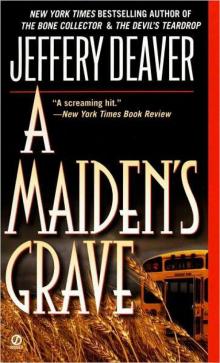 A Maiden's Grave
A Maiden's Grave Trouble in Mind: The Collected Stories - 3
Trouble in Mind: The Collected Stories - 3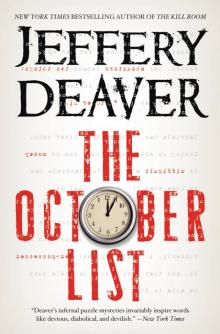 The October List
The October List The Deliveryman
The Deliveryman Garden of Beasts
Garden of Beasts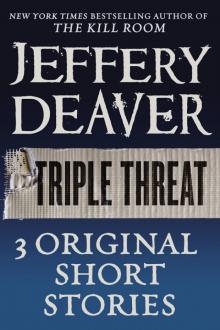 Triple Threat
Triple Threat The Broken Window
The Broken Window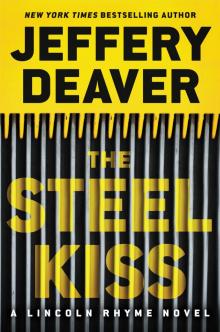 The Steel Kiss
The Steel Kiss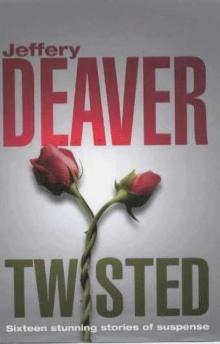 Twisted: The Collected Stories - 1
Twisted: The Collected Stories - 1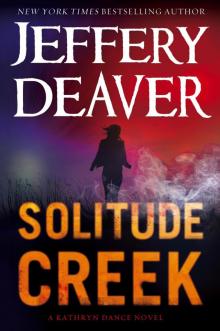 Solitude Creek
Solitude Creek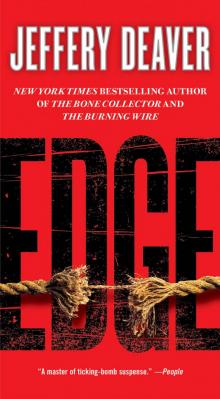 Edge
Edge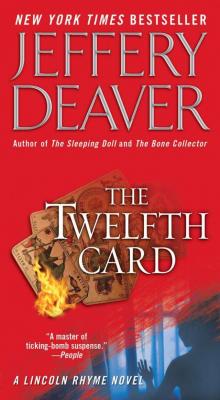 The Twelfth Card
The Twelfth Card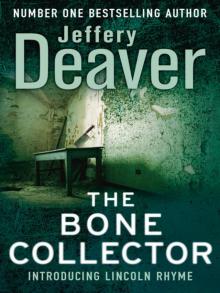 The Bone Collector
The Bone Collector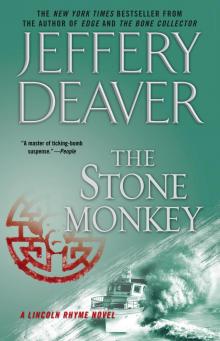 The Stone Monkey
The Stone Monkey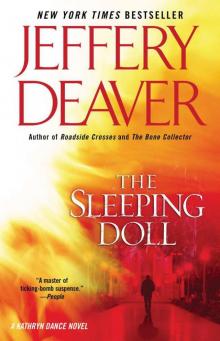 The Sleeping Doll
The Sleeping Doll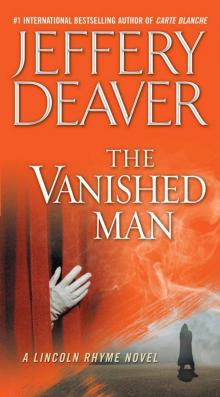 The Vanished Man
The Vanished Man The Kill Room
The Kill Room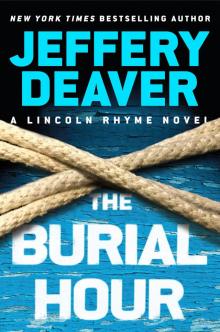 The Burial Hour
The Burial Hour An Acceptable Sacrifice
An Acceptable Sacrifice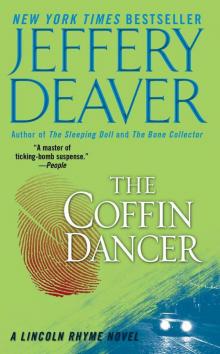 The Coffin Dancer
The Coffin Dancer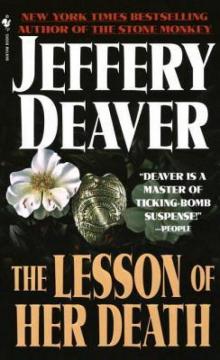 The Lesson of Her Death
The Lesson of Her Death The Empty Chair
The Empty Chair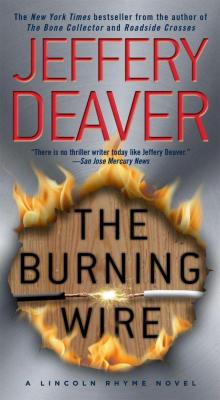 The Burning Wire
The Burning Wire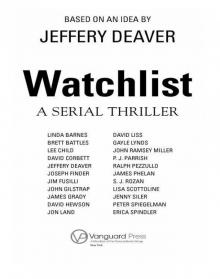 Watchlist
Watchlist Captivated
Captivated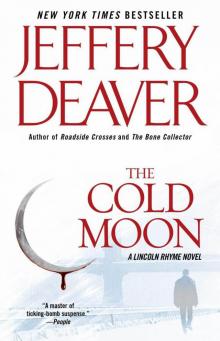 The Cold Moon
The Cold Moon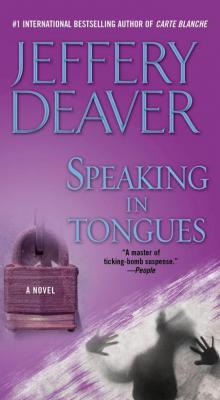 Speaking in Tongues
Speaking in Tongues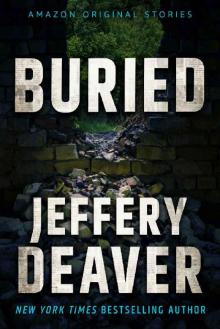 Buried (Hush collection)
Buried (Hush collection)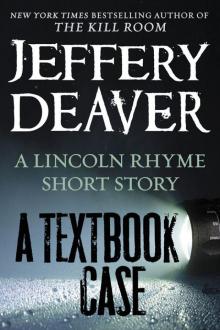 A Textbook Case
A Textbook Case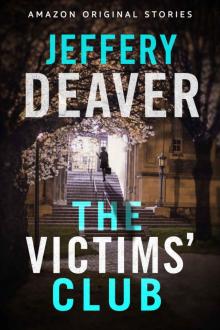 The Victims' Club
The Victims' Club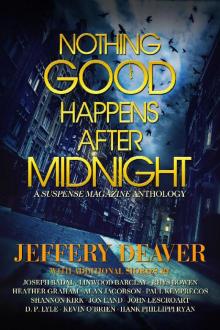 Nothing Good Happens After Midnight: A Suspense Magazine Anthology
Nothing Good Happens After Midnight: A Suspense Magazine Anthology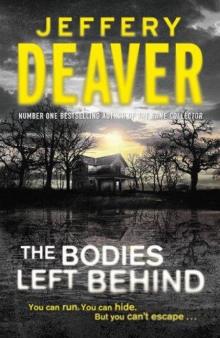 The Bodies Left Behind
The Bodies Left Behind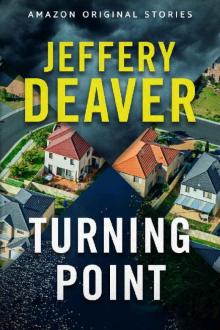 Turning Point
Turning Point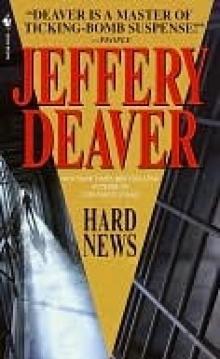 Hard News
Hard News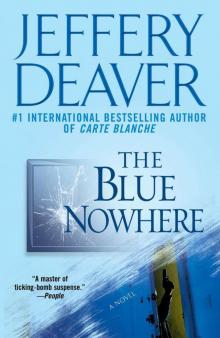 The Blue Nowhere
The Blue Nowhere The Second Hostage
The Second Hostage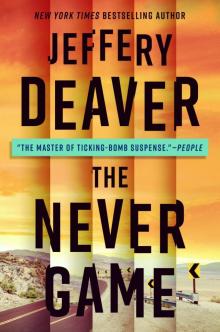 The Never Game
The Never Game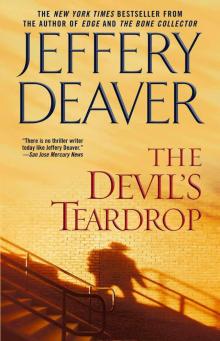 The Devil's Teardrop
The Devil's Teardrop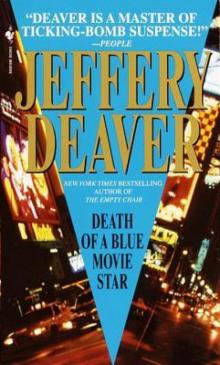 Death of a Blue Movie Star
Death of a Blue Movie Star The Skin Collector
The Skin Collector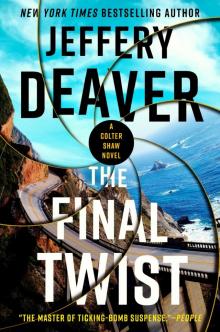 The Final Twist
The Final Twist Surprise Ending
Surprise Ending Twisted: The Collected Stories
Twisted: The Collected Stories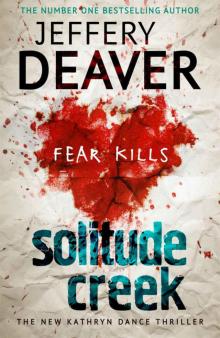 Solitude Creek: Kathryn Dance Book 4
Solitude Creek: Kathryn Dance Book 4 Twisted: The Collected Short Stories of Jeffery Deaver
Twisted: The Collected Short Stories of Jeffery Deaver Rhymes With Prey
Rhymes With Prey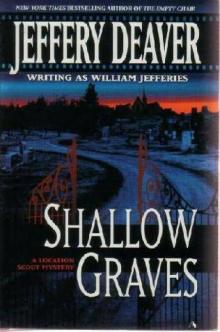 Shallow Graves
Shallow Graves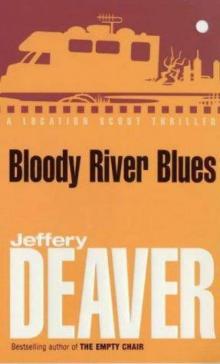 Bloody River Blues
Bloody River Blues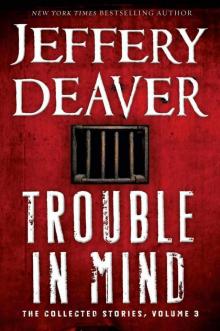 Trouble in Mind: The Collected Stories, Volume 3
Trouble in Mind: The Collected Stories, Volume 3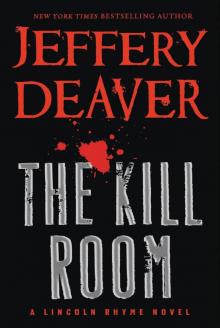 Lincoln Rhyme 10 - The Kill Room
Lincoln Rhyme 10 - The Kill Room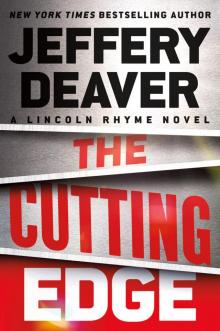 The Cutting Edge
The Cutting Edge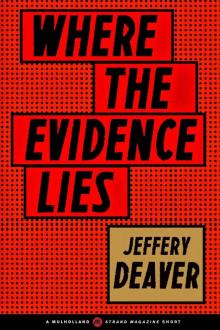 Where the Evidence Lies
Where the Evidence Lies Hell's Kitchen
Hell's Kitchen Twisted
Twisted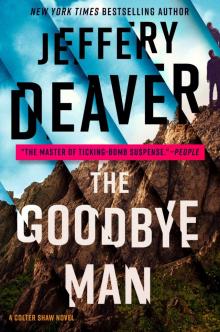 The Goodbye Man
The Goodbye Man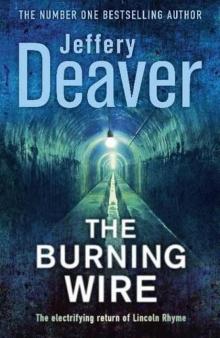 The burning wire lr-9
The burning wire lr-9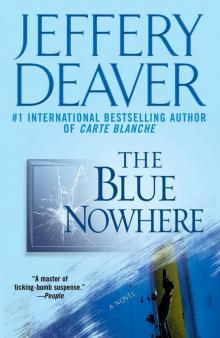 The Blue Nowhere: A Novel
The Blue Nowhere: A Novel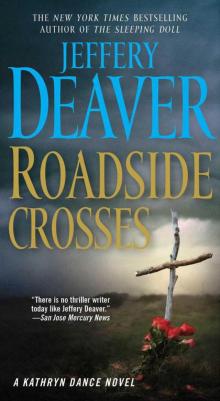 Roadside Crosses: A Kathryn Dance Novel
Roadside Crosses: A Kathryn Dance Novel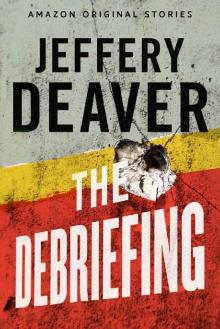 The Debriefing
The Debriefing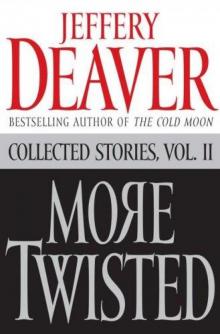 More Twisted: Collected Stories, Vol. II
More Twisted: Collected Stories, Vol. II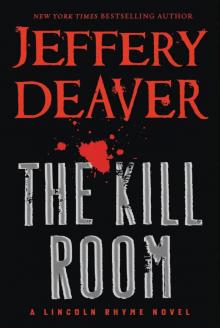 The Kill Room lr-10
The Kill Room lr-10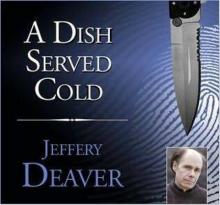 A Dish Served Cold
A Dish Served Cold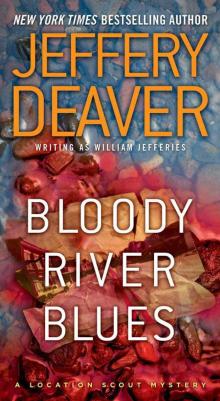 Bloody River Blues: A Location Scout Mystery
Bloody River Blues: A Location Scout Mystery The Bodies Left Behind: A Novel
The Bodies Left Behind: A Novel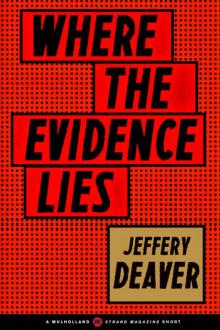 Where the Evidence Lies (A Mulholland / Strand Magazine Short)
Where the Evidence Lies (A Mulholland / Strand Magazine Short)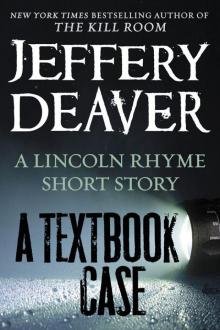 A Textbook Case (lincoln rhyme)
A Textbook Case (lincoln rhyme) Copycat
Copycat The Chopin Manuscript: A Serial Thriller
The Chopin Manuscript: A Serial Thriller Carte Blanche
Carte Blanche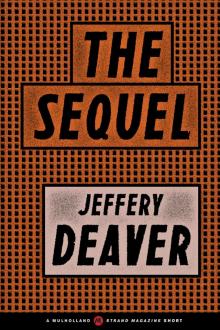 The Sequel
The Sequel